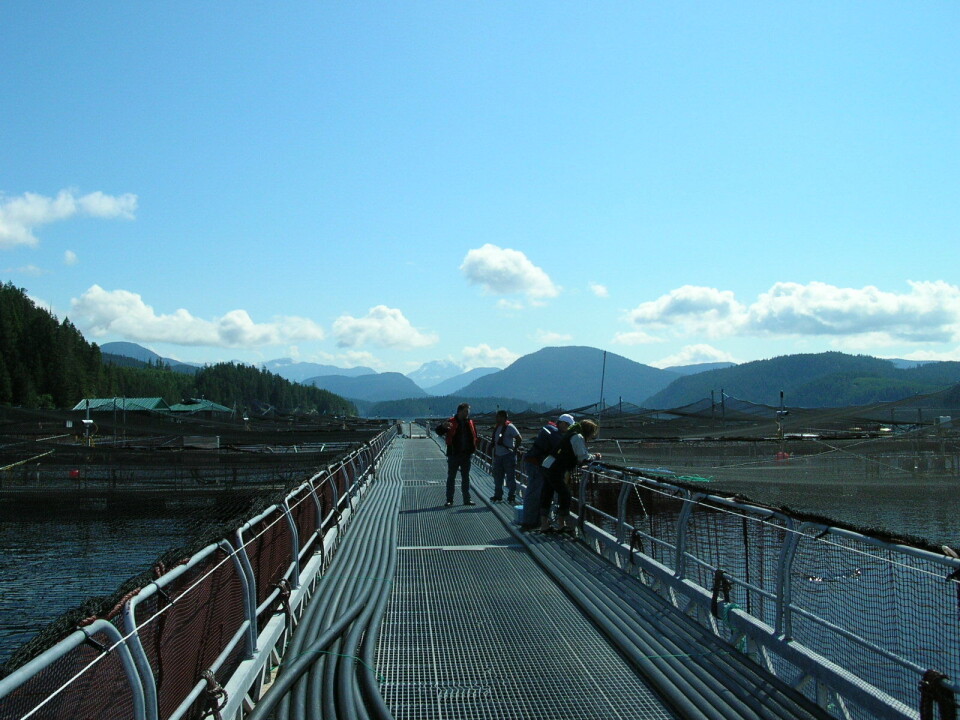
Future of BC aquaculture pondered
Ms. Robin Poirier has a Bachelor of Science in Biopsychology and “is a naturalist at heart with a love of the outdoors”, according to the school’s web site. Formerly called “The Centre for Sustainability and Social Innovation” at the Sauder School of Business has recently been renamed ISIS. UBC’s web site claims that “The Sauder School of Business at the University of British Columbia is Canada's leading academic business school, recognized globally for its contributions to the transformation of business practices through innovative research and teaching. The school has more than 31,000 alumni in 74 countries around the world. The UBC Sauder School of Business launched ISIS in April 2009. The goal of ISIS is to provide an educational and professional platform for upcoming Canadian business leaders to drive the new ideas and ventures that contribute to solving existing social, cultural, economic, political and environmental challenges”.
Ms. Poirier recently wrote an article for the ISIS web site entitled “The Future of Aquaculture”, which is reasonably balanced, but still demonstrates the need for this graduate student to do more research into the reality of B.C. aquaculture. Like others, she fails to recognize the fact that net-pen aquaculture of finfish represents the biggest opportunity for coastal communities in this part of the world, and done right, it is a sustainable activity- socially, environmentally and financially;
Think “Aquaculture” in British Columbia, and one typically thinks of open-net pen fish farms and all of the accompanying controversies. We are fourth in the world in salmon production, behind only Norway, the United Kingdom and Chile. In 2009, salmon represented a whopping 94% of the farm gate value of BC aquaculture, which dwarfed the wild salmon sector. In particular, Atlantic salmon, a non-native species to BC, made up a further 94% of the total salmon farmed in the province. The controversy surrounding the industry is largely around the transfer of sea lice from salmon farms to wild salmon fry, which, it has been hypothesized, is one of the main contributors to the decline of wild salmon stocks.
Although the true environmental effect of Atlantic salmon farms in BC is still under debate amongst biologists, the controversy is driving a change in the industry. The buzz is around closed containment systems that don’t interact with the surrounding ecosystem. However, the Department of Fisheries and Oceans (DFO) found that out of eight closed containment systems tested, only one was economically viable. Additionally, the study found that waste is more of an issue and energy use is much higher, questioning the perceived increased environmental sustainability of the systems.
BC based, AgriMarine has been a pioneer in the realm of closed-containment systems. Beginning with a land-based closed containment project, AgriMarine needed to abandon its pilot projects because energy, land and construction costs were too high to be cost competitive with net cage operators. AgriMarine has since then moved to a solid wall floating tank system in Middle Bay (by Campbell River), a configuration that requires 10% of the energy usage of land-based projects, is close to seafood processors, and allows quick access to the markets in the United States. It is still unclear if such a system can maintain an environmentally friendly image while still remaining economically viable, but the excitement over the projects is certainly mounting as the Chinook in the first test tank grow and mature.
Alternatively, perhaps the future of BC Aquaculture does not rest on salmon, but rather on shellfish. Although the wild harvest of shellfish still out-values the farmed sector by a factor of seven, shellfish aquaculture is rapidly growing in British Columbia. These bivalve molluscs are sustainable by nature: they thrive in pristine waters, require no food inputs, and are quite content to passively sit and filter seawater. But, as in any system, waste is produced which could be troublesome as operations grow in size. There are innovative ways to combat waste, such as to locate sea cucumbers below an oyster farm. Sea cucumbers are an Asian delicacy, and rearing two marketable species that work symbiotically in a system could be an important opportunity in the future.
Another BC based organization, SEA systems has taken this concept one step further and created an aquaculture rearing system integrating fin fish, shellfish, marine plants and deposit feeders where species of different trophic levels integrate. External food inputs are only necessary for the fin fish at the top of this food chain, and the waste produced from each tier in the system is used by members of the next highest trophic class. This is a large commercial operation that can compete with existing net-pen systems, but there are only one quarter of the fin fish, very little waste, very little energy input required, and only local species used. The benefits of such a system seem promising, but may not perhaps escape the industry criticism surrounding open ocean operations.
The challenge is in finding the best way to minimize our ecological footprint in light of the insatiable world demand for seafood and the growing pressure on wild stocks. Let’s hope the aquaculture industry can objectively move towards the technologies that best consider the health of our coastal waters, minimization of energy use, and the economic well being of our communities.





















































